
Food
The Road Less Dined
Auberge de Chassignolles was created in the mould of the traditional auberge, or inn, that of famed British food writer Elizabeth David’s roadside adventures. It’s perched high on a hilltop in the Auvergne, the centrepiece of your typical French village: all stone walls, climbing roses and vegetable gardens. There are more chimes to the town’s clock each day than permanent residents, and yet, it still feels lived in. It has its own warmth. The restaurant is casual, it caters to tourists and locals alike. Both the produce and the wines are drawn from the surrounds, so too the crowd that gathers at the bar each afternoon. It feels like it has always been this way.
I imagine it is exactly the kind of restaurant the Michelin brothers had in mind when, a little over a hundred years ago, a little less than 80 kilometres down the road, they created their guide. It was the ultimate in content marketing, designed to get more people on the road (and thus get them using more tyres).
The excellent news is one no longer needs to travel the 15 thousand kilometres to France to find a place in this fantasy. Over the past decade we have watched the restaurants in our own countryside blossom. This is not easy in a country with a population one third the size of France and a land mass as big as all of Europe – our challenges are different. In our wide, brown land, the distances to travel can be longer, but the rewards are every bit as great – and the options are growing.
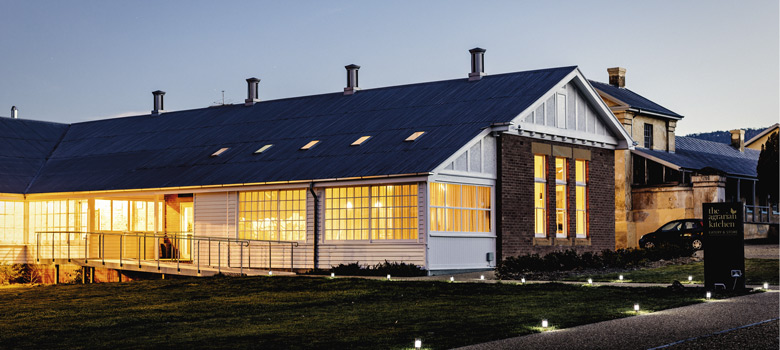
Regional rise
“Australia has always been one of the world’s most urban countries,” explains Phil Wood, chef at Pt. Leo Estate’s award-winning restaurant Laura in the Mornington Peninsula, “So we have this almost mystic sense of what the ‘bush’ is like.”
Growing up on a farm in New Zealand, country life is not new to Wood, however, finding his kitchen there is. We are a country of city dwellers and, for most of his working life, Wood has been among us, with the past eight years at the helm of Rockpool (and later Eleven Bridge), an institution that served the inner-city clientele of Sydney for nearly 30 years.
Moving out to the Mornington Peninsula in 2017, Wood, chasing a new challenge, is one of the newer kids on the country block. “I spend a lot of time driving to meet people now,” says Wood. “I like building personal relationships with the growers, I like chatting, so it is always a joy going out to a farm. I grew up in a semi-regional area, so in some ways, it feels like going home.”
While the Michelin Guide would love the breadth of our roads, the number of people living on them is relatively small. And yet, we’re seeing serious investment in these areas. Pt. Leo Estate, an ambitious project created by John Gandel, combines art, food and wine. Beyond finding a home for the property investor’s incredible sculpture collection, this was a big investment (literally, with an estimated $50 million price tag) in the powerful pull the country has on our city dwellers.
Certainly, for Wood, the investment appears to be paying off with Laura named best new restaurant in the 2019 Good Food Guide, nudging out many inner-city restaurants for the prize. In fact, more regional restaurants were recognised with chef hats than ever before. It is clear that regional dining is on the rise.
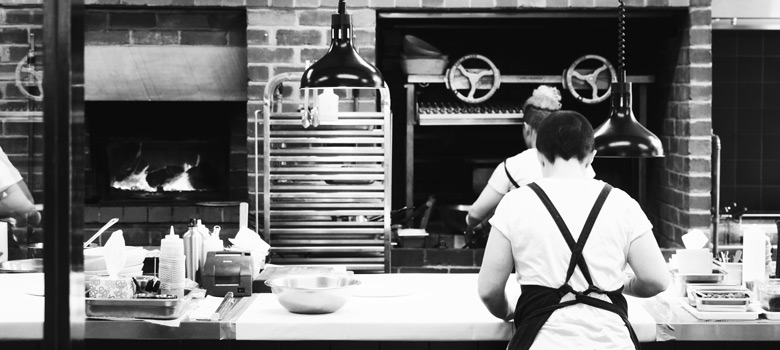
an essential connection
In South Australia, it was regional restaurant The Salopian Inn that took out The Advertiser’s best restaurant for 2019. “I still remember daydreaming as an apprentice at The Lake House about having my own restaurant in Vale.” As in McLaren Vale, where Karena Armstrong opened The Salopian Inn six years ago. “Somehow we ended up with a family consisting of three sons and a restaurant. Completely bonkers, but totally worth it!”
“Our version of bad traffic is getting caught behind a harvester at vintage,” continues Armstrong. “The access to the producers is super genuine, they are your customers, friends and producers. The life for our family is amazing; space, clean air and freedom for young boys. It makes working chef hours easier. And there is loads of gin and wine, oh and amazing beaches too.”
The producers are, of course, a huge part of the equation. Getting out into the countryside is the opportunity to learn more about the land and its people. While they might be a tiny portion of our overall population, they are the ones who feed us all.
This is not just a connection that should be forged by the chefs. “Regional dining connects people with the land, where the food comes from and the environment in general,” says Willa Arantz, owner of Racine Restaurant with her husband Shaun, in Orange. “Right now, it’s so dry and we desperately need good rain, it’s good for our guests to see this when they visit, it connects them with what we go through in regional areas, to the plight of their fellow Australians.”
Willa and Shaun Arantz both grew up in country NSW, before leaving to spend time in kitchens in the UK. When they returned from London in 2007, it was to a tiny wooden cottage 20 kilometres from Orange. “An opportunity to take on a little restaurant on a vineyard in Orange literally landed at our feet. Orange had a great foodie culture and some legendary restaurants (Selkirks and Lolli Redini) already, so it was just such a brilliant opportunity. It was a great adventure and a dream come true.”
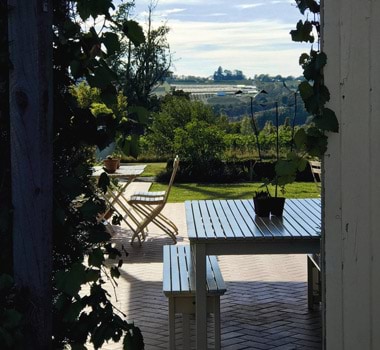
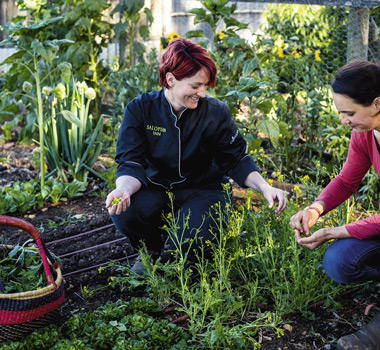
dream deliveries
While interest in these regional restaurants may be on the rise, great cooking in our country towns is nothing new. The seeds for this movement were planted long before, with the restaurants Arantz and Armstrong mentioned – Selkirks and The Lake House – among the leading lights. To continue the agricultural metaphors, we are now reaping what they have sown.
“The area has a brilliant reputation for a wide diversity of produce: meat, fish and vegetables. It really is thriving and supported at a retail level at the Willunga and Adelaide Farmers Markets,” says Armstrong. “With food of that quality at a retail level, you get an amazing food culture within your community. From the start, I built direct relationships with producers, it is one of the best parts of owning a restaurant, you share the journey with them. I have a bloke named Peter who shoots rabbits and hares for me. It’s the best wild rabbit. Ever. I just call him and then they turn up a few days later.” Peter’s rabbits. These are the kind of relationships most city chefs can only dream of.
For Rodney Dunn, owner of The Agrarian Kitchen Cooking School and, more recently, The Agrarian Kitchen Eatery, it was exactly that kind of dreaming that led him from Sydney to Tasmania. “At the very heart of it was the fact that I thought there’s got to be better flavours, the realisation that the best flavours were going to be in a garden. Sydney was not the place to have a garden.”
Dunn made the move with his wife Séverine Demanet 11 years ago, when they opened their cookery school on a small property out of New Norfolk, about 40 kilometres north west of Hobart. It is now widely considered Australia’s best.
And so, when the opportunity arose to take over the lease of New Norfolk’s historic Bronte building a decade later, the site of Australia’s oldest mental asylum, they jumped. “A restaurant felt like the right thing to do,” says Dunn. “There was so much beautiful, abundant produce we could share it with more people.”
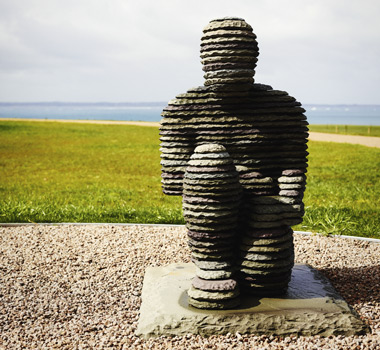
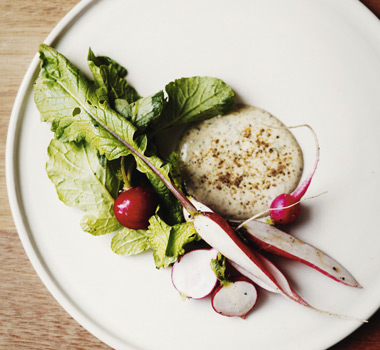
hit the road
While we may not have a tyre company pointing the way, we certainly have the impetus, and this is important to nurture. “It’s the opportunity to eat their way around a landscape – in terms of dining, it doesn’t get better,” says Dunn. “Particularly in Australia, this needs to develop, grow and evolve.”
“Regional dining tells a story of the small producer,” explains Armstrong. “It gives these producers a way for people from all over the world to try their produce and to talk about what they are doing. Many regional restaurants also grow their own produce and that is very dynamic for a chef.”
The joy of working with these producers, but also getting their hands in the soil, is echoed by Arantz. “We’ve had a lot of fun growing some of our own,” she says. “However, we don’t want to be farmers, we certainly don’t want to cut the farmers out because we need them. It’s a restaurateur’s dream to have access to beautiful produce on their doorstep, winemakers popping in to talk about their wine, we feel so in touch with the land and the producers and part of something really special.”
Of course, regional dining has always been about more than getting on the road, more than a holiday. These are the communities that feed and nurture us, that battle the floods and droughts. They deserve a place at the best tables and sitting at their table is one of the best ways to show your support.
For many, the roadside ideal of France, the Michelin Guide, the auberge, is the fantasy, but in Australia we are now building our own fantasy, something that fits into the mould of our unique landscape and heritage. This is your opportunity to be a part of it.
For more great Selector content, click here.